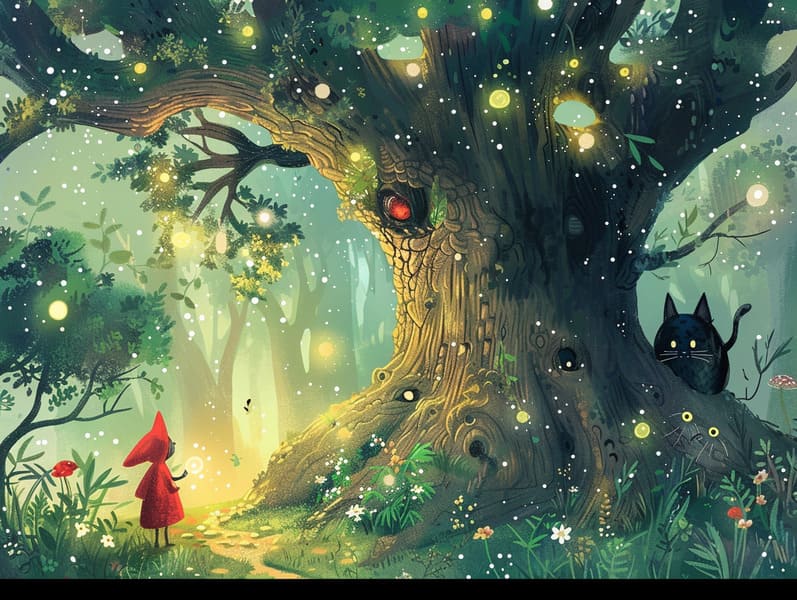The Emergence of Best Fairy Tales with the Eternal Delight.
The Emergence of Best Fairy Tales with the Eternal Delight.
Blog Article

Fairy tales have ancient roots. These narratives have been narrated from one generation to the next well before they were ever recorded. They originated from a variety of backgrounds, including Indigenous traditions. They were initially narrated among mature audiences, often carrying themes and messages pertaining to the societal norms and beliefs of the time.
The Grimm brothers, the two Grimm brothers, were among the first to gather and publish many of these beloved narratives. Their volume, "Grimm's Folk Tales," included stories like "Cinder Maid," "The Story of Hansel and Gretel," and "Snow-White and Rose-Red," which have since become essentials in the world of famous fairy tales. Similarly, Hans Andersen's imaginative stories, such as "The Mermaid," and "The Duckling that Could," have stolen hearts worldwide, guaranteeing their place in the pantheon of beloved fairy tales.
Even though they are old, these tales remain as applicable as ever, especially as nighttime stories for kids. These enchanting tales are now available in diverse formats, including colorful picture books, delightful animations, and internet fairy tales.
Their unwavering allure can be connected to several whimsical characteristics:
Significant Morals: Old fairy tales often offer important moral lessons. Fairy tales like "The Boy Who Cried Wolf" teach the importance of truth, while "The Tortoise and the Hare" stress the benefits of resolve and unpretentiousness. These stories offer kids clear distinctions between good and bad, building their moral compass in a subtle yet profound way.
Sympathy and Perception: Ancient fairy tales frequently feature heroines facing difficulties and adversities, urging audiences to relate with their struggles and root for their triumphs. For instance, "Beauty and the Beast" highlights the virtue of appreciating inner worth to perceive the true being of a character, nurturing empathy and appreciation.
Cultural Knowledge: Many fairy tales are imbued with the cultural contexts from which they arose. Exploring these narratives can provide enlightening views into different traditions, developing a sense of global insight and knowledge.
Fantasy and Innovation: The enchanted elements in fairy tales—magical beings—revitalize children’s visions. These stories guide readers to fantasy realms, engendering imaginative ideas and a sense of magic that endures a lifetime.
Old fairy tales are not only fascinating but also informative. They work as charming tools in nurturing various intellectual and emotional capacities in the young. When timeless fairy tales are spoken, they advance language acquisition by showing new language and detailed sentence structures. This practice also strengthens hearing abilities and focus, as little ones keep up with the story, keen to see what happens next.
Furthermore, exploring the themes and characters of traditional fairy tales can develop analytical skills and cognitive skills. Little ones are led to spot patterns, guess what will happen, and comprehend cause and effect. These contemplations also aid the young voice their thoughts and feelings, promoting their emotional intelligence.
In today’s technological age, the availability of digital fairy tales has made these tales more acquirable than ever. Web-based platforms and web apps make available ample collections of Grimm's fairy tales that can be accessed or listened to anytime, anywhere. Fairy tales narrated are particularly sought after, extending an entertaining method for young readers to appreciate these charming tales. Narrated books and read-aloud videos take characters and settings to life, often complemented by fantastical musical scores and songs that amplify the story adventure.
The persistent attraction of traditional fairy tales lies in their ability to change to present eras while maintaining their essential themes. Contemporary takes of these fairy tales often include more representative protagonists and modern settings, making them accessible to today’s audience. However, the underlying themes of spirit, empathy, and fairness remain unchanged, continuing to reach audiences of all ages.
Fairy tales also offer a sense of serenity and knowability. They allow a orderly narrative with a distinct beginning, middle, and end, often wrapping up with the wrap-up of conflicts and the triumph of rightness over wrongness. This dependability can be solacing for kids, extending a sense of constancy in an fluctuating world.
Ancient fairy tales continue to fascinate and edify new generations, maintaining their grandeur and importance in modern society. As children's bedtime stories, they put out a perfect blend of delight and instruction, facilitating moral values, empathy, and creativity. The abundance of digital fairy tales and the favor of fairy tales spoken ratify that these traditional fairy tales remain attainable to new generations.
By holding onto and narrating these narratives, we continue to exalt the rich tapestry of creativity and cultural heritage. Whether you are delving into a vibrantly illustrated book, perusing a virtual library, or playing an read-aloud story, the majesty of bedtime fairy tales is always within reach. These fairy tales convey of the invariable influence of narratives and its ability to unify us across time and space.
Be it you are browsing a gorgeously illustrated book, discovering a digital library, or listening on an audio story, the attraction of bedtime fairy tales is always within reach.
These narratives highlight of the invariable influence of narratives and its ability to draw us together across epochs and get more info places, casting a charm that delights and instructs alike.